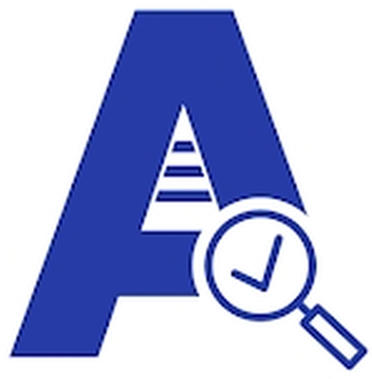Fixed Asset Inspection using eAuditor Audits & Inspections
Fixed asset inspection is essential for businesses as they enable them to carry out their operations and generate revenue.
What is Fixed Asset?
A fixed asset, also known as a tangible fixed asset or simply a “property, plant, and equipment” (PP&E), is a long-term, tangible asset that is used in the production of goods or services for a business and is not intended for sale to customers. Fixed assets are an essential part of a company’s infrastructure and are expected to provide benefits to the company over several years. These assets are recorded on a company’s balance sheet and are subject to depreciation over their useful lives.
Key characteristics of fixed assets include:
Tangibility:
Fixed assets are physical assets that can be seen and touched. Examples include buildings, land, machinery, vehicles, furniture, and equipment.
Long-term Use:
Fixed assets are not meant for immediate sale. Instead, they are expected to be used by the company for an extended period, usually beyond one year.
Production or Service Use:
Fixed assets are typically used in the production of goods or the delivery of services. For example, manufacturing machinery is a fixed asset used in the production of goods, while office furniture and computers are used in providing services.
Value Recognition:
Fixed assets are recorded on a company’s balance sheet at their original cost, including all costs necessary to acquire, install, and prepare the asset for use. Over time, these assets are subject to depreciation, which is the systematic allocation of the asset’s cost over its estimated useful life. Depreciation reflects the wear and tear, obsolescence, or reduction in the asset’s value over time.
Financial Reporting:
Companies are required to report their fixed assets on their financial statements, typically under the “Property, Plant, and Equipment” or “Fixed Assets” section of the balance sheet. The depreciation expense related to these assets is recorded on the income statement.
Examples of fixed assets include:
- Land and buildings
- Machinery and equipment
- Vehicles
- Furniture and fixtures
- Computers and servers
- Manufacturing plants and facilities
- Office buildings
- Infrastructure (e.g., roads and bridges, if owned by a company)
Proper management and accounting for fixed assets are crucial for financial reporting, tax purposes, and assessing the overall health and value of a company.

Benefits of fixed assets audits
Conducting regular inspections of fixed assets offers several benefits to organizations, regardless of their size or industry. These inspections help ensure that the assets are in good working condition, compliant with regulations, and contributing to the organization’s overall efficiency and productivity. Here are some of the key benefits of fixed asset inspection:
Asset Safety and Compliance:
- Inspection ensures that fixed assets are in compliance with safety regulations and standards, reducing the risk of accidents, injuries, or environmental violations.
- Compliance inspections help organizations avoid legal and regulatory penalties by identifying and addressing issues promptly.
Asset Longevity:
- Regular inspections can identify wear and tear, damage, or potential issues early, allowing for timely maintenance and repairs. This prolongs the life of fixed assets and reduces the need for costly replacements.
Cost Savings:
- By identifying maintenance needs proactively, inspections can prevent costly breakdowns and emergency repairs. Planned maintenance is often less expensive and disruptive than emergency repairs.
Efficiency and Productivity:
- Well-maintained fixed assets operate more efficiently, contributing to increased productivity and reduced downtime. This is especially important for critical assets in manufacturing and production environments.
Asset Valuation and Financial Reporting:
- Accurate and up-to-date information from inspections ensures that fixed assets are properly valued on the balance sheet. This is crucial for financial reporting, asset tracking, and taxation purposes.
Insurance Premiums:
- Regular inspections help in accurately assessing the condition and value of assets. This can lead to more accurate insurance premiums, potentially reducing insurance costs.
Asset Tracking and Management:
- Inspections are an opportunity to update asset records, ensuring that asset databases are accurate and up-to-date. This aids in effective asset tracking and management.
Risk Mitigation:
- Inspections can identify potential risks associated with assets, such as fire hazards, electrical issues, or structural weaknesses. Addressing these risks proactively minimizes the chance of accidents or asset-related incidents.
Environmental Impact:
- Regular inspections can help organizations identify and address environmental issues related to fixed assets, such as leaks, emissions, or improper disposal practices.
Compliance with Maintenance Contracts:
- For assets covered by maintenance contracts or warranties, regular inspections are often required to maintain coverage. Failure to inspect may lead to contract violations or voided warranties.
Asset Planning and Budgeting:
- Inspection data can inform long-term asset planning and budgeting by helping organizations prioritize maintenance, repairs, and replacements based on asset condition and expected life cycles.
Data-Driven Decision-Making:
- Inspection data can be analyzed to identify trends and patterns, helping organizations make data-driven decisions regarding asset management, investments, and strategic planning.
In summary, fixed asset inspection provides organizations with a proactive approach to managing their assets, ensuring safety, compliance, and cost-effectiveness. They contribute to better asset management, reduced operational disruptions, and improved financial reporting.

Fixed Asset Inspection using eAuditor Audits & Inspections
Using eAuditor Audits & Inspections for fixed asset inspection can streamline the process, improve accuracy, and make it more efficient. Here’s a step-by-step guide on how to conduct fixed asset inspection using eAuditor Audits & Inspections:
Install and Set Up the App:
- Download and install the eAuditor Audits & Inspections app on your inspection team’s smartphones or tablets. Configure the eAuditor Audits & Inspections with relevant user accounts and permissions to ensure that only authorized personnel can access and use it.
Import Asset Data:
- Input a list of your fixed assets into the eAuditor Audits & Inspections in template. This should include asset details such as asset name, ID, location, purchase date, maintenance history, and any other relevant information.
Create Inspection Checklists:
- Develop detailed inspection checklists or templates within the eAuditor Audits & Inspections app for each type of fixed asset you need to inspect. Include specific criteria, questions, and tasks that inspectors should complete during each inspection.
Schedule Inspections:
- Use the eAuditor Audits & Inspections to schedule regular inspection dates for each fixed asset. Assign inspectors to specific assets or locations for inspections. This ensures that inspections are conducted systematically and on time.
Conduct Inspections:
- Inspectors use the mobile eAuditor Audits & Inspections to access their assigned inspections. They follow the predefined checklists, recording observations, taking photos, and providing comments as needed.
- The eAuditor Audits & Inspections can include features for scanning asset barcodes or QR codes to quickly identify assets during inspections.
Document Findings:
- As inspectors complete inspections, they can document findings, such as asset condition, maintenance requirements, and any issues or defects they discover. Photos and notes can be attached as evidence.
Generate Reports:
- The eAuditor Audits & Inspections app have reporting capabilities to generate detailed inspection reports. These reports can include asset status, maintenance recommendations, and any action items that need to be addressed.
Prioritize Maintenance:
- Based on inspection findings, prioritize maintenance or repair tasks. The eAuditor Audits & Inspections can help in categorizing assets based on their condition and urgency of maintenance needs.
Notification and Alerts:
- Set up the app to send notifications and alerts for critical issues or overdue inspections, ensuring timely attention to maintenance or repairs.
Update Asset Records:
- After inspections, the eAuditor Audits & Inspections app automatically updates asset records with the latest inspection data, including dates, findings, and maintenance history.
Integration with Asset Management System:
- If your organization uses an asset management system or software, eAuditor Audits & Inspections can integrate with it to keep asset records synchronized.
Data Analysis and Trends:
- Use the data collected from inspections to analyze trends in asset conditions and maintenance needs, allowing for better long-term asset planning and budgeting.
Continuous Improvement:
- Continuously assess and refine your inspection checklists and processes to improve the efficiency and effectiveness of your fixed asset inspections.
By using eAuditor Audits & Inspections for fixed asset inspection, organizations can ensure that their assets are well-maintained, compliant with safety standards, and contribute to overall operational efficiency. It also facilitates data collection and analysis for informed decision-making.

